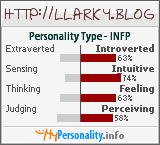Andragogy consists of learning strategies focused on adults. It is often interpreted as the process of engaging adult learners with the structure of learning experience. Originally used by Alexander Kapp (a German educator) in 1833, andragogy was developed into a theory of adult education by the American educator Malcolm Knowles. - wikipedia
1.Adults need to know the reason(motivaton) for learning something (Need to Know)
Experience (including error) provides the basis for learning activities (Foundation).
Children too need motivators for learning something, the motivation being that they don't want to be licked. Hohoho. No in all seriousness, besides the reward and punishment as motivators. Their role models can be motivators(intrinsic motivation) for learning. Especially when children try to be like them by adapting their values, behaviors, etc.
Choice of challenge is another characteristic of motivation. Children who experience success in meeting one challenge will become motivated, welcoming another. These motivated learners will choose an activity that is slightly difficult for them, but provides an appropriate challenge. When they successfully complete such a task, children gain a high level of satisfaction. Unmotivated children (those who have not experienced early success) will pick something that is very easy and ensures an instant success. With such easy success, children feel only a very low level of satisfaction, because they know that the task offered little challenge. The challenge for parents is helping their child find an appropriate challenge while still allowing the choice to be the child's.
Newborn infants are born with a tremendous amount of intrinsic motivation. This motivation is aimed toward having some visible effect on the environment. When infants can actually see the results of their actions as a reward, they are motivated to continue those actions. These attempts toward control are limited within the young child, and include crying, vocalizations, facial expressions and small body movements. Toys that change or make sound as the child moves them are therefore strong motivators.
http://www.nasponline.org/resources/home_school/earlychildmotiv_ho.aspx
2.Adults need to be responsible for their decisions on education; involvement in the planning and evaluation of their instruction (Self-concept).
Again, no lickin for the adults!
3.Adults are most interested in learning subjects having immediate relevance to their work and/or personal lives (Readiness).
4.Adult learning is problem-centered rather than content-oriented (Orientation). children -> goal-orientated (even, there's such thing as a work-avoidant goal orientation where the child does not wish to engage in any types of academic activities)
5.Adults respond better to internal versus external motivators (Motivation). ->This is shown in children also.
viernes, 30 de octubre de 2009
Suscribirse a:
Enviar comentarios (Atom)

No hay comentarios:
Publicar un comentario